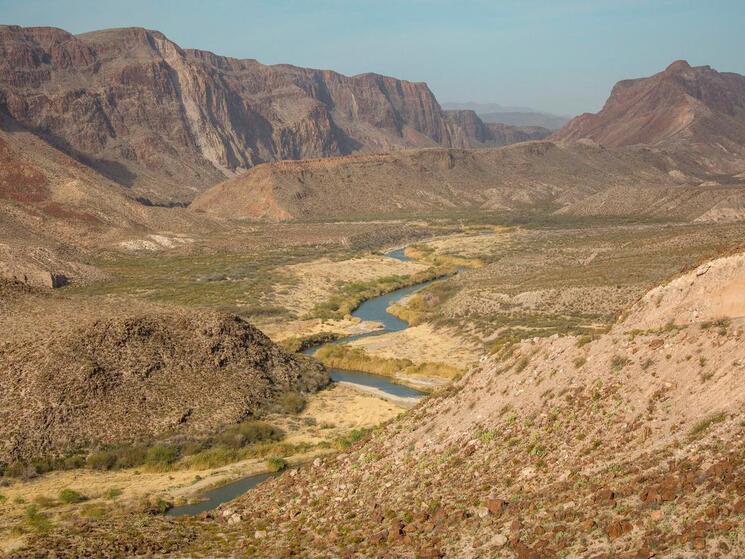
Southwest’s Great River is Dying
- Date: 21 June 2023
- Author: Brian Richter, senior freshwater fellow at World Wildlife Fund
The iconic Rio Grande, or “Great River,” is at risk of losing its greatness. Water overuse and climate change have heavily depleted the once-mighty flow of the river, creating desperate conditions for the farming communities and natural ecosystems that depend on it. We can restore the Rio Grande to some semblance of its former glory, but doing so will require a transformational shift in the way political leaders, farmers and communities perceive the river, their culture, and their livelihoods.
Just how far has the mighty river fallen? Consider this: whereas the river once rose forcefully in springtime in response to melting snows in Colorado, its ‘spring pulse’ has now dwindled to less than a third of its former volume. As a result, water storage reservoirs essential to farming have dried up, leaving farmers without water to grow food and fiber. At the end of last year’s growing season, New Mexico’s largest reservoir, Elephant Butte Reservoir, was less than 10% full.
The first culprit behind this decline, water overuse, begins in the San Luis Valley of Colorado, where watering a half million acres of potato and alfalfa farms has reduced the springtime flow at the border between Colorado and New Mexico to one-sixth of what it was over a century ago. Climate change compounds the problem. The river is losing water to greater evaporation, as rising temperatures suck moisture from soils, from snowpacks, and from the river itself. Climate scientists foretell the loss of a fourth of what’s left of the river by 2050.
The first and most important step to reversing this loss is incentivizing a substantial shift in the mixture of crops being grown. Nearly 90% of Rio Grande water consumed in Colorado and New Mexico goes to irrigated farms. Over two-thirds of that farm water grows thirsty cattle-feed crops: alfalfa and other grass hay. Massive volumes of water could be returned to the river, and to reservoirs that supply farmers, with a shift away from cattle feeds and other water-guzzling crops.

Well-conceived state and federal farm programs can reward farmers willing to ‘grow water’ by shifting to water-conserving crops. Such an investment in a healthier, more verdant river corridor would also enhance tourism and recreational revenues.
Second, cities need to use less water. Albuquerque grew by 40% during 2000-2020 but managed to reduce its total water use by 17%, mostly by replacing old plumbing and converting water-intensive landscaping with drought-tolerant native plants. In the process, Albuquerque has thrown down the gauntlet to other cities, and provided them with a blueprint for success.
Third, we need to carefully shape the movement of water as it flows through the states. This requires coordinated timing of water releases from Cochiti and Abiquiu dams to restore the spring pulse and then sustain sufficient low water flows through summer and fall.
Federal action can also make a difference. Notable examples include bills last Congress by Representative Melanie Stansbury and Senator Martin Heinrich that would, among other things, establish an integrated water resource management plan for the Rio Grande Basin.
It’s not too late to save the Rio Grande. As the author Wallace Stegner wrote, “One cannot be pessimistic about the West”—a region he called the “native home of hope.” Only then, added Stegner, will we have “a chance to create a society to match its scenery.”